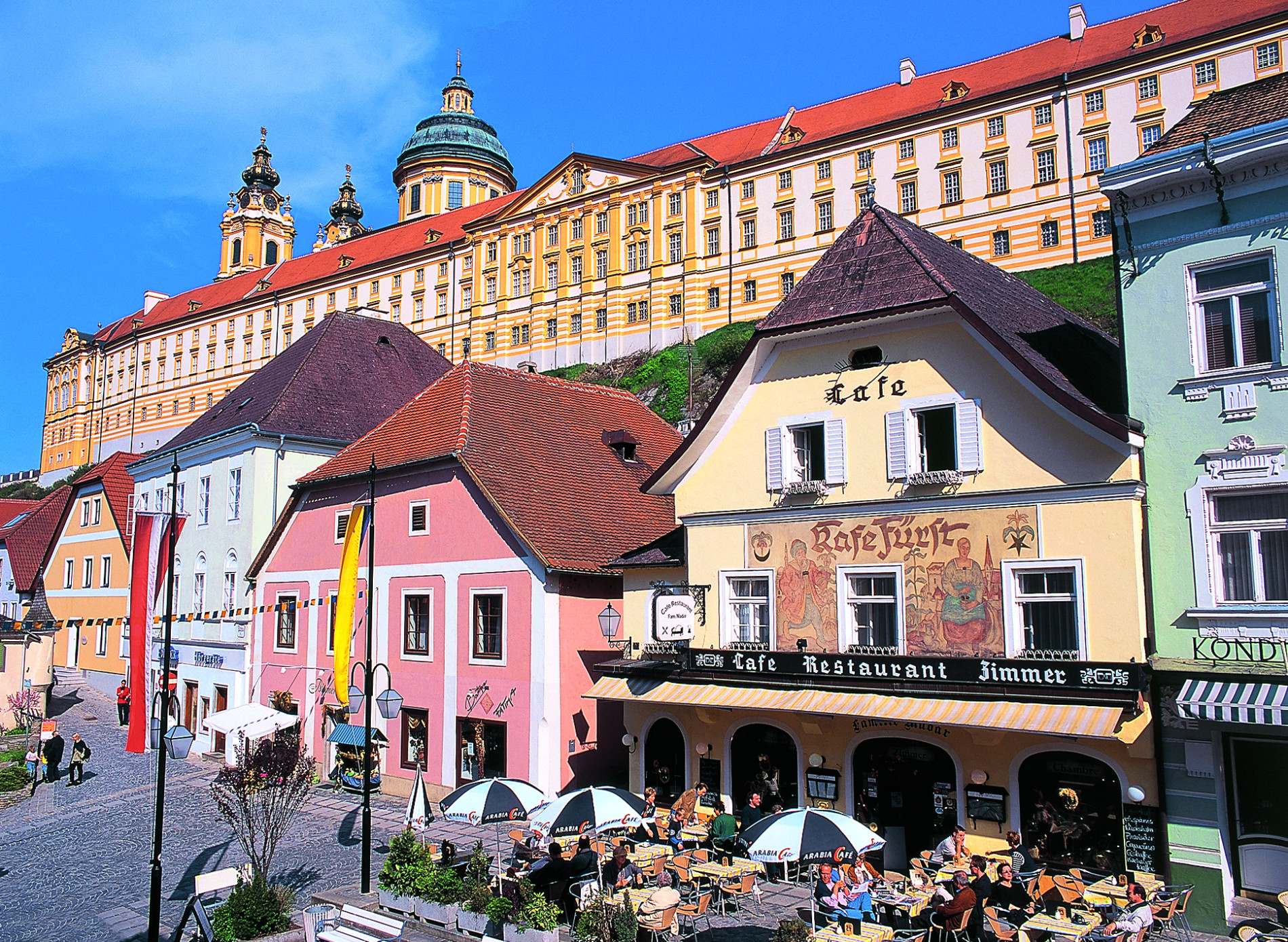The diocese shines far beyond Melk.Today's baroque building was built by Jakob Prandtauer between 1702 and 1746 and is one of the most important baroque buildings in Austria.The abbey is listed as a UNESCO World Heritage Site.
The Abbey Museum, housed in the former imperial rooms, shows the 930-year history of the abbey in a varied manner under the title “On the way from yesterday to nowadays”.The Benedictine Abbey Library in Melk is one of the most extensive collections in Europe.The abbey garden, open from May to October, invites visitors to relax.The baroque garden pavilion with its frescoes, the Paradiesgärtlein and the meditatively designed Benedictine Way are waiting to be discovered.The most extensive private mineral collection in the state of Lower Austria is also in Melk Abbey in the prelate hall.
Deeper down in the city, the “Haus zum Nibelungenlied und Sandtor” testifies to the history of the city and the importance of the Danube.The so-called sand gate marks the access to the ship landing stage and the transfer over the Danube.The semicircular toll tower was once part of the city fortifications, and later the salt toll collector sat there. A memorial plaque refers to two verses of the Nibelungenlied, Burgherr Astolt welcomes Kriemhild and her companion in "Medelick" and shows them the way to today's Mautern.
(c) Elisabeth Storer




